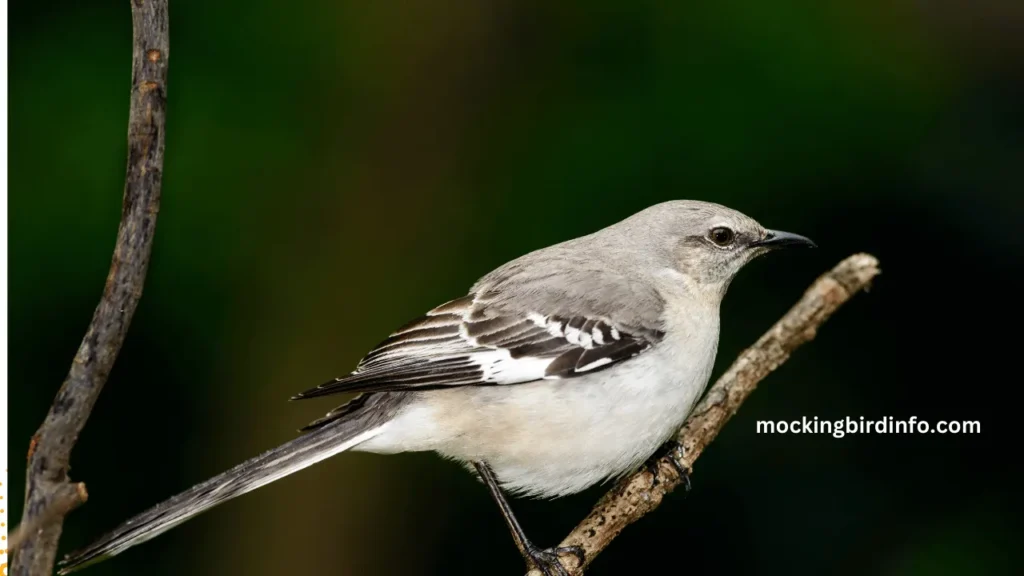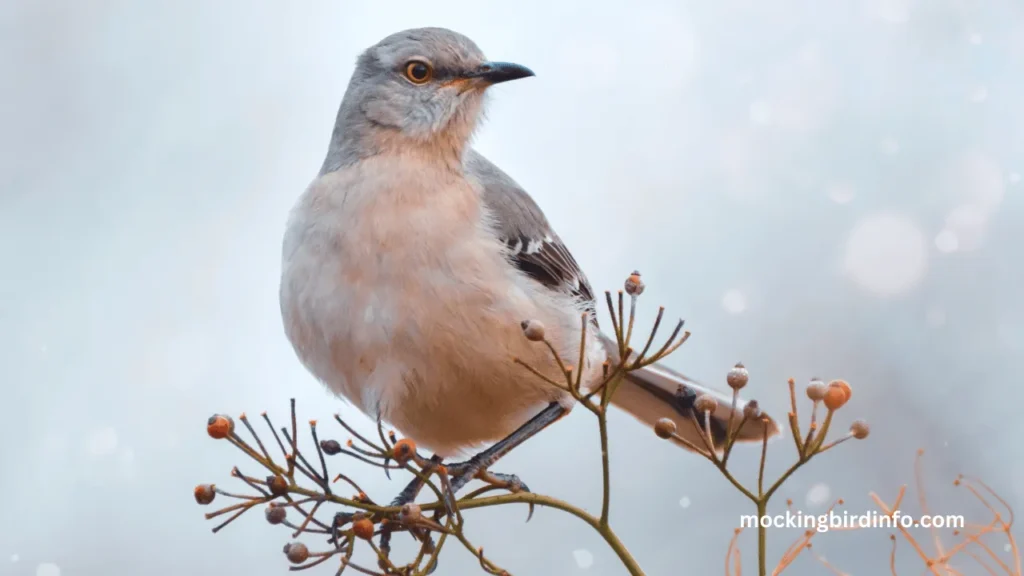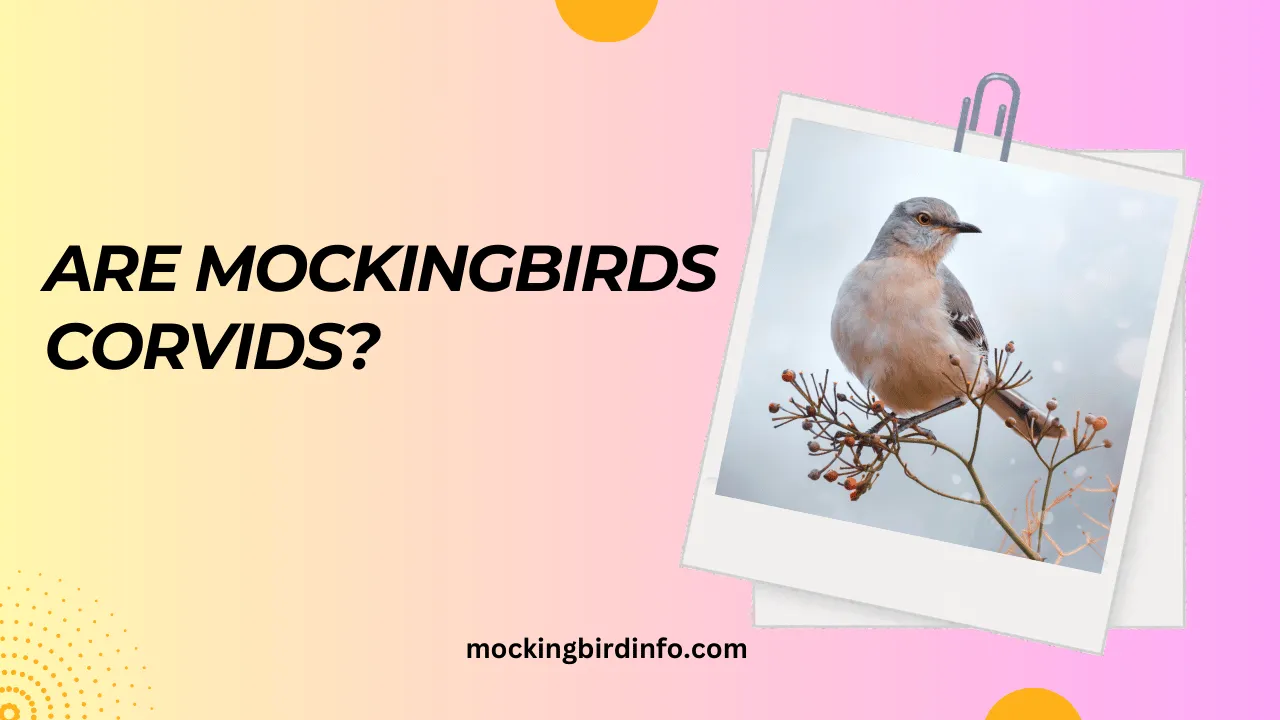Mockingbirds often capture our attention with their stunning vocal mimicry, replicating not just the songs of other birds but also sounds from their environment, like car alarms or barking dogs.
This uncanny talent raises questions about their intelligence and classification. Are they related to the famously clever crows, ravens, and magpies known for their problem-solving and strategic skills?
Understanding the answer sheds light on the rich diversity and adaptation strategies among bird families. Despite their shared traits of intelligence and bold behavior, mockingbirds and crows are not in the same family.
Mockingbirds belong to the Mimidae family, known for their vocal range and mimicry, while crows and their kin are part of the Corvidae family, celebrated for their problem-solving abilities and complex social behaviors.
This difference in classification has profound implications for how we study, protect, and understand these birds.
In this article, we’ll unravel the key distinctions between mimids and corvids, from their physical characteristics and behavioral traits to their evolutionary history.
We’ll also dispel common misconceptions and explore why accurate classification is crucial for both conservation and scientific research.

Contents
Distinguishing Features of Mimidae and Corvidae
Physical Characteristics
Birds in the Mimidae family, such as mockingbirds and thrashers, tend to have slender, elongated bodies. Their long tails aid in balance and agile movement, which is particularly useful when darting through thick shrubs and trees.
Most mimids feature subtle plumage, often gray or brown, that serves as effective camouflage in their natural habitats. Some mockingbirds, like the Northern Mockingbird, display white patches on their wings that become prominent in flight.
In contrast, the Corvidae family includes crows, ravens, and magpies—birds known for their sturdy and often larger builds. Their strong beaks are well-adapted for breaking tough food sources such as nuts or animal prey.
Corvids commonly exhibit darker, more uniform plumage, though some species, like the magpie, have striking color patterns with an iridescent sheen. This physical strength and resilience equip corvids for a wider range of activities, including tool use.
Behavioral Differences
Mimicry is the hallmark of mimids, and mockingbirds are particularly adept at this skill. They can imitate dozens of bird species and even human-made sounds.
This ability plays a key role in territorial defense and courtship displays, where male mockingbirds use varied songs to showcase their prowess and attract mates.
Mimicry helps them ward off intruders by creating the illusion of a larger, more diverse bird population.
Corvids, meanwhile, excel in areas that require high cognitive function. They are famous for their use of tools, a behavior rarely observed outside of primates.
For example, New Caledonian crows have been seen fashioning hooks from leaves to extract insects from tree bark.
Corvids also engage in complex problem-solving activities, such as using stones to raise the water level in a container to reach food—demonstrating a level of intelligence that rivals that of great apes.
Evolutionary Relationship
Shared Ancestor: Mockingbirds and corvids share a distant common ancestor, but they split into separate evolutionary paths millions of years ago.
This divergence resulted in unique adaptations that align with their respective ecological niches.
Different Evolutionary Paths: While mockingbirds evolved to become proficient vocal mimics, allowing them to communicate and defend their territories more effectively, corvids developed a path that prioritized cognitive complexity.
Their intelligence has enabled them to survive and adapt in diverse environments, from dense forests to bustling urban areas. This evolutionary trajectory accounts for the notable differences in behavior and physical traits between the two families.
Common Misconceptions
Intelligence
A widespread misconception is that mockingbirds possess the same level of intelligence as corvids. While mockingbirds are indeed clever, particularly in terms of their communication skills and adaptability, corvids are unmatched in the avian world when it comes to cognitive function.
Corvids can solve multi-step puzzles, recognize human faces, and even demonstrate an understanding of causality. Mockingbirds, while intelligent, are not known for these same levels of complex behavior.
Family Affiliation
Another frequent misunderstanding is that mockingbirds and corvids are closely related because of their similar size and sometimes assertive behavior. While it’s true that both families include birds known for their boldness, they belong to entirely separate avian lineages.
This difference highlights the importance of understanding bird taxonomy, which helps ornithologists and bird enthusiasts correctly identify and study different species.

The Importance of Accurate Classification
Conservation Efforts
Accurate classification is vital for effective conservation. Each bird family has unique ecological needs and challenges. Mockingbirds, for instance, are highly adaptable and can thrive in both urban and rural areas, often seen nesting in backyards and public parks.
On the other hand, some corvids require large territories and complex ecosystems to sustain their populations. Misclassification can lead to inadequate or misdirected conservation measures, potentially harming these birds’ natural habitats.
Scientific Research
Correct classification aids in scientific research, enabling better understanding of evolutionary history and behavioral ecology. When researchers know the distinct families and their traits, they can create more accurate studies on migration, diet, and social structure.
For instance, a study assuming that mockingbirds and corvids share similar cognitive abilities would miss out on the unique ways each family interacts with its environment. Accurate taxonomy ensures that data collected in studies is relevant and leads to meaningful insights.
Conclusion
Understanding the difference between mockingbirds and corvids sheds light on how diverse and specialized avian life is. While mockingbirds are celebrated for their vocal mimicry and adaptability, corvids take the spotlight with their impressive problem-solving skills and social intelligence.
Mockingbirds are a testament to the power of mimicry in nature, while corvids exemplify cognitive evolution in the animal kingdom.
Clarifying these distinctions helps prevent misconceptions and ensures that bird enthusiasts, researchers, and conservationists appreciate the unique qualities of each family.
This understanding leads to better appreciation, more targeted research, and effective conservation strategies. The diversity among birds reminds us of the countless ways evolution crafts species, each with their own remarkable set of abilities.
FAQs
No, mockingbirds belong to the Mimidae family, while crows are part of the Corvidae family.
2. Do mockingbirds have the same intelligence as crows?
No, crows and other corvids have higher cognitive abilities compared to mockingbirds, particularly in areas like problem-solving and tool use.
3. Why do people confuse mockingbirds with corvids?
Their similar bold behavior and size often lead to confusion, but their family classification is distinct.
4.What family do mockingbirds belong to?
Mockingbirds are part of the Mimidae family, noted for their exceptional vocal mimicry.
5. What makes corvids unique?
Corvids are known for their high intelligence, demonstrated through tool use, strategic thinking, and social behavior.
6. Can mockingbirds use tools like crows?
No, tool use is a trait mostly observed in corvids, not in mimids like mockingbirds.








